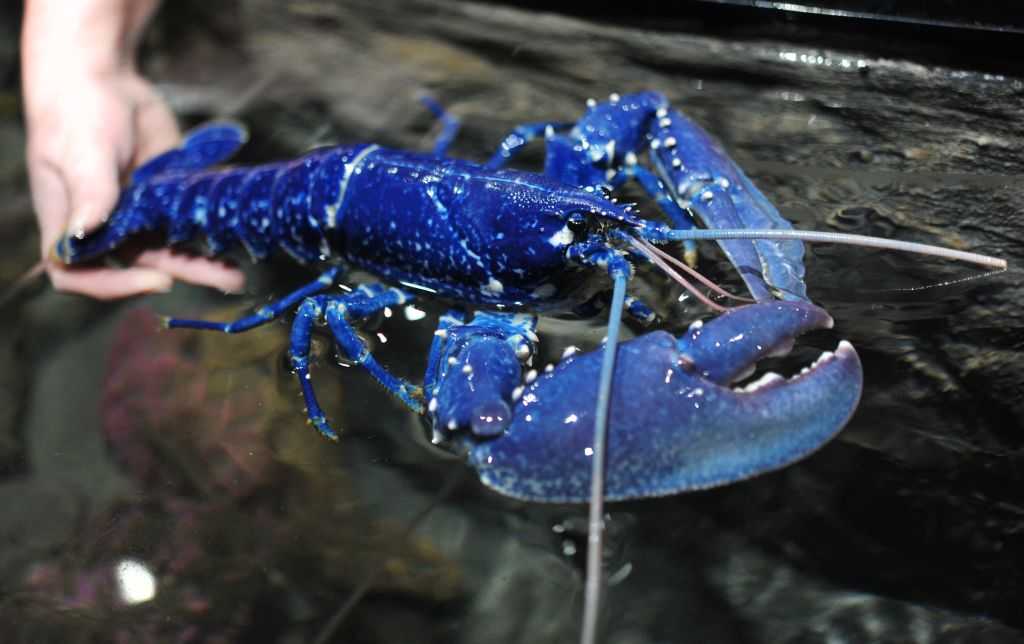Why do Lobsters Come in Rare Colors? This Team of UNE Researchers Wants to Find Out
Posted
Last Updated
At first glance, the lobster moving slowly through the water looks like most others caught in the Gulf of Maine.
But when Dr. Markus Frederich pulls it from a tank of seawater at the University of New England, the difference is immediately clear. The lobster, named Currant, has vivid blue claws and legs, a few bright orange knuckles and a shell that’s perfectly divided, half blue and half brown.
The odds that a lobster will look like Currant? Around 1 in 50 million.
Currant is not the only unusual crustacean at the university’s Arthur P. Girard Marine Science Center, which has become a magnet for rare lobsters. There’s Autumn, with a sunny yellow shell, and Peaches, a fiery orange lobster carrying thousands of eggs expected to hatch this spring. Three-year-old Fig started life as a blue larva, but now sports a purple shell.
Why are these lobsters brightly colored instead of the more common mottled brown? Are their colors influenced by water temperature or diet? And what does this mean for the future of the species?
Those are the questions Frederich, a professor of marine sciences, and a team of student researchers will try to answer by decoding these lobsters’ DNA.
The new research program is believed to be the first of its kind and everyone involved is excited to find out more about the genetics of these lobsters that capture the attention of people far from the coast of Maine.
“Who doesn’t get excited?” said Aubrey Jane, a graduate research assistant who studies lobster larvae. “Even the saltiest lobsterman likes a blue lobster.”
The lobsters will eventually be returned to the ocean.
Learn More at pressherald.com

